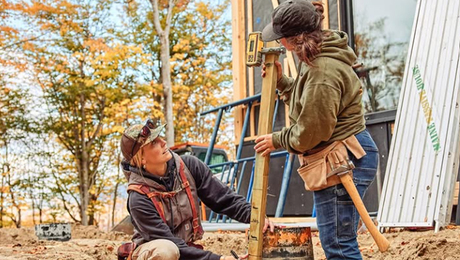Self-Taught MBA: Polishing Your Crystal Ball
Scenario analysis can help you make decisions today that are robust enough to thrive in an unknowable tomorrow.

Every morning the president of the United States examines the closest thing there is to a crystal ball. It’s called the “PDB” — the President’s Daily Brief. It’s a top-secret binder containing a high-level distillation of the best estimates that a $70-billion intelligence community can provide to the chief executive about what may happen in the next 24 hours.
This is done to reduce uncertainty and allow the president to make critical decisions with as much confidence as possible.
It would be great to get a PDB on the factors that affect your business, too. To make good decisions, you need to know the future. And the sooner you know what’s coming, the better you can respond.
Unfortunately, the future is unknowable, even for the president of the United States. There are so many variables at play that it’s impossible to consider them all and make an accurate prediction. The future creeps up quickly, and it’s easy to become reactive to events, instead of proactive, especially when the future reveals a big surprise.
So the question is, without a crystal ball, or even a PDB, how can you extend your view over the horizon to make sound decisions today?
Probability and Predictions
From the business perspective, this is your most important strategic question: What’s going to happen?
Uncertainty in the future means risk. Therefore, you buy insurance as a hedge against improbable but potentially catastrophic events. Unfortunately, there’s no insurance to hedge against bad business decisions. If you move too soon, it’s catastrophic. If you move too late, it’s catastrophic. When do you move?
You may think it’s possible to peer into the future, or predict it, at least for a short distance in time — that what came before will determine what’s next. This assumes that you’re looking at the right causes and that the future is a linear reality of clear cause and effect. Time and again, this approach misleads us. In modern strategic thinking, the shortsighted “one future” fallacy no longer holds up.
Consider the game of chess, played within the limitations of a square board, with 16 pieces per side and only 64 squares. A chess Grandmaster can accurately predict his opponent’s next … how many moves? Some folks say 20, others 10 or even just four moves ahead. Consider that any one move in a game opens 1600 possibilities. Two moves, and the number becomes 2.5 million. By four moves, a Grandmaster would have to contemplate nearly four billion possibilities. In this game of high strategy, a Grandmaster cannot predict even one move ahead.
Real life is much more complex than the circumscribed and rule-bound game of chess, so not even the entire U.S. intelligence community can, and hence does not even pretend to, see into the next 24 hours. Instead of predictions, real life offers the president a set of prospects and probabilities. In other words, it’s a series of potential scenarios, including the best, worst, and most probable outcomes. Enter scenario planning.
Scenario Planning
With an uncertain future in a complex world, there’s a tool that provides a helpful, mid-range solution. Developed by nuclear strategist Herman Kahn in the 1950s, it became known in military intelligence circles as scenario analysis and scenario planning. The military uses scenario analysis to develop possible geopolitical conflicts and then, with scenario planning, develops war games to respond to these conflicts under various conditions, including the unthinkable ones, such as a nuclear attack. Sports teams use scenario analysis in creating mock game plays, rehearsed under competitive conditions. Some of the world’s most successful corporations, such as Shell Oil, have professional scenario analysts to help them develop business war games that prepare the company for a broad gamut of emerging situations.
Nowadays all major corporations engage in scenario analysis, but early on, the Royal Dutch Shell company employed this strategic tool to prepare for future events that it could envision as possible, but not necessarily predictable.
During the late 1960s, business statistician Pierre Wack refined scenario planning to help the oil giant anticipate the Arab-induced oil embargoes of the 1970s, and, later, refinery and oil-tanker overcapacity. Shell was the only oil company to remain profitable during these industry shocks, precisely because company leaders had thought through and rehearsed their response to these eventualities.
Did Pierre Wack own a crystal ball? No. He did not predict any of the events that occurred, he simply imagined that they could occur, along with a series of other scenarios that could have unfolded but didn’t.
Scenario planning assumes that we can anticipate possible future events, even when we cannot predict specific ones with enough certainty to prepare for only that one outcome.
As the name implies, scenario planning means creating imaginary “scenes” of situations in as much detail as possible. It involves assembling a menu of alternative futures, with plots and characters, just as in the theater. In Wack’s version of the scenario development, the first step in developing the alternate narratives of the future entails separating what is predictable, in the sense of most probable, from what is not predictable. In other words, some things we can assume, such as that the sun will come up in the morning, while others we cannot assume. Those elements we can assume must remain as the consistent features in every possible scenario. Those elements we cannot know beforehand become the variables.
Keeping It Real
Scenario planning entails probing the future to see how your project or business will respond under alternate outlooks. This way, you can make decisions that are robust enough to succeed under a variety of different futures. Construction of detailed scenarios allows us to rehearse the future, and live through it, even if just mentally.
The Delta Forces, your local fire department, and your favorite football team all practice simulated real-life scenarios under game-day conditions. Commandos practice in hyper-real environments, using live ammunition, and boxers don’t just box shadows — they fight professional sparring partners. Your scenarios should include as much realism as possible. The watchwords of scenario planning include action and response, and pushing hard until failure. Within the imaginary world of alternate futures, think the unthinkable, challenge conventional wisdom. The idea is to run through each alternate future as if it were unfolding now. Make your scenarios robust with plausible but unexpected or improbable situations for which you may not be prepared.
Six Steps to Setting Up Scenarios
In classic scenario planning, most strategists employ a six-step process:
Change drivers. First, you must establish clearly the key questions you want to formulate and explore. This may be the viability of your business plan in different future environments, or the real-estate-development project you will undertake, which may require several years to build out,and hence faces mid-range uncertainty in economic and demographic changes within the community.
Predeterminants and uncertainties. What are the constant and mutable factors in your environment? What will remain the same, and what may change? What do you assume — such as customer profile and economic conditions — when making decisions, and do these assumptions constitute reliable probabilities, or unpredictable possibilities? This is perhaps the most difficult part, to sort your assumptions into the truly probable and the merely possible. You need to know this clearly and honestly to maintain only the probable as consistent elements in your scenarios, while playing with alternatives to what’s possible.
Scenario matrix. Many strategists suggest making a graph on a two-by-two matrix, with two extreme outcomes top and bottom, and two extreme influences right and left — such as, boom times on top, and deep recession on bottom. On the left, you may have positive influences, such as more remodeling activity; on the right, negative influences, such as total economic retrenchment. This is more art than science, but it’s a means to visualize the extremes and explore the grey areas in between. At this stage, you may develop a rough outline of six to nine scenarios. But since you don’t have time to fully develop all of them, decide on no more than three.
Telling stories. Next, you begin to flesh out the chosen scenarios, such as the most desirable (cup runneth over), most probable (business as usual), and least desirable (catastrophe), and piece together each one into a narrative with the same predictable elements (winter will come this year) but changing the unpredictable ones that impact your project (winter will be severe).
Predict and control. With each scenario, the idea is to focus on causality and outcome, not on probability. This helps you to consider possibilities that, while less probable, are potentially catastrophic. At Shell, this technique helped the company not to predict but to prepare for the most improbable of situations, which was that oil producers would refuse to ship their product. By letting your imagination run wild, and then returning to sober thinking, you may pick up on possibilities and subtle changes occurring within your business environment that you would have missed otherwise.
Testing your hypothesis. Once you have fully fleshed out the storyline of each alternate future, plug in the decision you want to make, or the project you will undertake, and see how it plays out in this imaginary movie with alternate endings. As you work through what may happen, think about what changes you would make in your planning with the benefit of this imaginary “hindsight,” just as if you already knew what’s coming to act on that knowledge today — the Back to the Future premise.
Finally, identify the leading indicators for each of the alternate future scenarios that will alert you, in real life, to which future is in fact unfolding. Strategists typically name each scenario and the response plan, such as “harsh winter,” “sunny days,” or “recession strikes.” When real life reveals the real future, you have already rehearsed it and even given it a name.
We can benefit by rehearsing all kinds of future events, such as sales calls and job interviews, but we rarely do. We imagine outcomes, but rarely the storyline that brought them about. Your scenarios can be as simple as asking yourself a few “what if” questions about all the options you can imagine. Mentally rehearse each scenario, your best response to the events, and what elements in your environment foreshadowed this outcome.
If you’re ambitious, organize a formal retreat with your key employees and family members at least once a year to run through this dress rehearsal for life, originally developed to prevent a nuclear holocaust and now used by all major corporations to prepare for the unexpected.
In brief, scenario analysis is a strategic planning exercise of imagining and then analyzing in close detail a range of possible future events that could impact your life and business. Consider these possible outcomes, not to develop a predetermined view of the future, but to prepare for a variety of futures, with a focus on making decisions today that are robust enough to thrive under a variety of unpredictable outcomes.



























